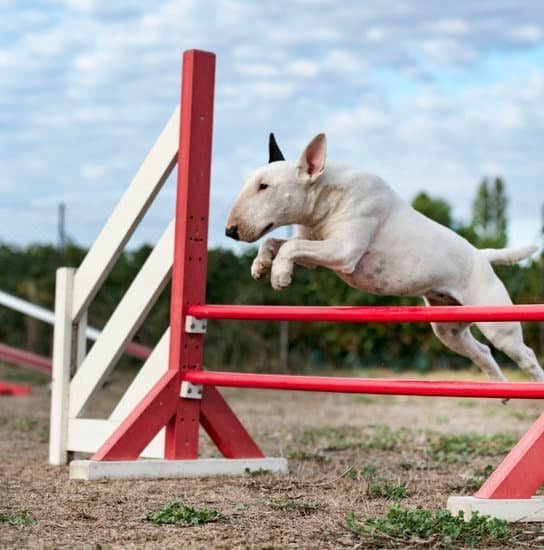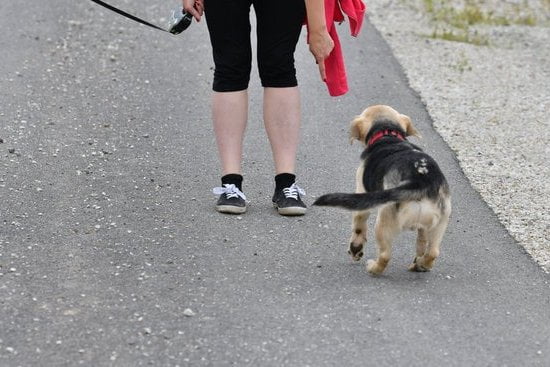Introduction
Crate training a dog is an effective and invaluable tool for providing your furry friend with structure, comfort, and safety. Not only does it effectively housebreak your pup, but it also keeps them safe when you can’t keep an eye on them.
Just like for children, crate training a dog encourages positive behavior through rewarding good behaviors such as staying in the crate when left alone or sleeping soundly throughout the night. It also helps your pup learn important commands quickly and offers a sense of security to those that are anxious and easily startled.
Having said that, there is no exact timeline for the crate training process. Depending on the breed of dog you have, your individual puppy’s personality and age, as well as how quickly they pick up cues from you – the duration of this process may differ greatly. Fortunately, by following some important guidelines in terms of minimizing potential stressors while also establishing consistent boundaries and having realistic expectations – crate training your pup becomes far less intimidating!
The Benefits of Crate Training
Crate training a dog can be extremely beneficial for both you and your pet. It helps to create a safe and secure environment for your pup where they feel comfortable, protected and relaxed. Crate training can help establish more control to prevent destructive behavior, provide an indoor den-like experience that is safe and secure, as well as promote proper potty habits and reduce the risk of them suffering from separation anxiety or feeling neglected.
In terms of how long you should crate train your dog ultimately depends on the individual’s needs. Some puppies may take just a couple of days to get used to their crate while others may require significantly more time. Your best approach would be to start off slowly by familiarizing them with their new space and place multiple stimuli inside such as their favorite toys or treats. Gradually introduce longer periods until they have learned that when inside the crate it’s a comfortable place where they can feel safe and secure – this could take anywhere from days to weeks or even months depending on the particular dogs temperament. Be sure not to force them into it either, take it slow and gradually increase the amount of time spent in their crate each day until accustomed!
Knowing When to Start Crate Training
The best time to start crate training a dog is when he or she is a pup. Young dogs are quicker to learn and adapt, making it easier for them to get used to the idea of being in a crate. Depending on the breed and age of the pup, most puppies can begin learning at around 8 weeks of age. If possible, introduce your pup to his crate while he’s still young and his bones are still developing. Puppies will typically begin recognizing their boundaries within 4-7 days of consistent training, though it can take up to 2-3 weeks depending on the dog’s individual personality.
Keeping Training Sessions Short
When getting started with crate training, keep sessions short — no more than 30 minutes per session. Overworking your pup may cause anxiety or stress which could end up hindering progress rather than helping it! Be sure to reward the dog for good behavior both during the session and afterward. Keeping rewards short and sweet will help ensure positivity associated with going into the crate occurs more frequently than negative feelings occur. Additionally, provide toys and treats that have already been tested as safe for puppies to consume inside the crate in order to create an enjoyable atmosphere and experience while they are in their new space.
Creating The Right Environment for Crate Training
Crate training is an important part of your dog’s overall training and can take a few weeks or a few months depending on the individual. It is best to start crating your dog as soon as possible, as it helps him feel secure and can prevent him from developing mental issues like separation anxiety or destructive behaviors. Additionally, crate training teaches your dog how long he must stay in his crate, which can help prevent excessive barking or howling when confined to an area.
When beginning the crate training process, it is important to create the right environment for your pup. Ensuring you have the correct size of kennel for your pup’s size and age; making sure the bedding is comfortable; placing familiar items such as blankets and toys inside; adding treats and chew toys when they are first placed inside; and never punishing them if they do have an accident inside are all steps that will make crate training more successful and enjoyable for both you and your pooch!
Implementing Crate Training Strategies
The answer to how long do you crate train a dog depends on the individual dog, but broadly speaking it should take between two weeks and six months. The process may be shorter or longer depending on the breed and temperament of your pet.
Before beginning crate training, make sure to equip your home with a large enough dog crate that is appropriate for its size and age. Start by introducing the crate to your pup slowly, with plenty of treats and positive reinforcement. This will help create a positive association with the crate right away. Then gradually build up to crating your pup for short periods of time while supervised – keep in mind every puppy is different and some may adapt faster than others.
Once you’ve established a good relationship between your pet and the crate, start leaving them inside for longer time frames, like during times when you can’t supervise them directly (provided they have done their business outside prior). During these times make sure to provide appealing toys so they can stay occupied and ensure most of their needs have been met before briefing crating them. After getting comfortable inside, begin transitioning or alternating between confining your pup in their bedroom (dog room) and having access inside the house when someone is present to supervise them accordingly (i.e no chewing furniture or other prohibited items). Finally increase their freedom within the house until they are able to manage themselves within all rooms appropriately. Keep in mind this last step can be longer depending on how serious you are about teaching full house rules such as no jumping on people groups etcetera.
Guidelines to Follow While Crate Training
Crate training a dog isn’t an overnight process. The rule of thumb is that a puppy can hold its bladder for the number of hours equal to its age in months, plus one. Therefore if a puppy is 2 months old, it should not be expected to hold its bladder for more than 3 hours.
Additionally, begin crate training gradually and make sure rewards are given for positive reinforcement. Begin by placing the crate in a room where your dog already feels safe and secure. Introduce the crate by feeding your pup in the crate initially with the door open so that they become familiar with the space without any pressure. Once they’re comfortable with their mealtime routine in the crate, begin to slowly close the door while they’re eating before they eventually learn to remain calmly inside until released. Additionally, reward them anytime they enter their crate on cue or remain calm inside with treats or verbal praise. It can also help to give short supervised confinement sessions during times when you’re home but cannot directly monitor your pup’s behavior (such as when showering). Lastly, make sure that you’re patient with slow progress and avoid pushing too hard for results too quickly by taking time each week to practice these steps and consistently up-level difficulty once your pup appears comfortable.
Tracking Progress of Crate Training
Tracking progress in crate training your dog is an important step to helping ensure that it is done properly and with minimal stress. It will also help you ensure that your dog is comfortable, secure and happy in its new space. When tracking the progress of crate training, there are three main components that you should focus on – consistency, progression and rewards:
Consistency: Crate training requires having a set schedule and stick to it. Keep track of when the crate is used, how often and for what duration. This will help your pup establish a routine as well as encourage them to relax and be more comfortable accepting the crate.
Progression: Change up their confinement area regularly. Start by leaving your pup in their cage for shorter durations before gradually increasing the amount of time they can spend away from you in the area. This allows them to get acclimated while not feeling overwhelmed or confined too soon.
Rewards: Positive reinforcement is key throughout the entire process; consider providing small treats and toys when they successfully stay in their crate for longer periods of time or remain neutral about going into it. Treats can help motivate them to stay positive about going in their crate on their own.
Final Considerations
The length of time it takes to crate train a dog can vary greatly depending on the particular pup, their age, and the level of motivation they possess. Generally speaking, most dogs are easily trainable if given consistent guidance and direction. However, this can take anywhere from one week to a month or longer, depending on the individual animal’s capacity to learn and adapt. It is important to select an appropriate crate size for your dog based on their size, not just their breed as a general guide. Setting boundaries and ensuring that consistency is key to successful crate training. This includes creating rewards like an edible treat when they display good behavior or staying in their designated area when desired. Providing ample opportunity for exercise before and after being crated is also essential for any form of successful canine training. With patience and guidance from you as their owner, your pup should progress quickly with understanding the expectations set for them within said grounds of their crate.
Conclusion
Training and crating your dog should be thought of as an important and much-needed part of pet care. It is a vital step in preventing bad behavior and teaching your pup the basics. While it can take some time, crate training is certainly a worthwhile endeavor that can become quite rewarding for both you and your pup. With consistency and proper guidance, the process can go quickly. Most trainers would agree that you will start to see positive results within three weeks or less. When correctly done, you’ll be able to enjoy a long-lasting relationship with your furry best friend! Furthermore, it goes without saying that creating a comfortable atmosphere, providing lots of positive reinforcement, and ensuring safety will result in success for both you and your pooch!

Welcome to the blog! I am a professional dog trainer and have been working with dogs for many years. In this blog, I will be discussing various topics related to dog training, including tips, tricks, and advice. I hope you find this information helpful and informative. Thanks for reading!





